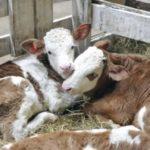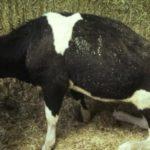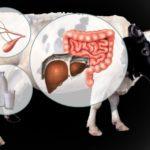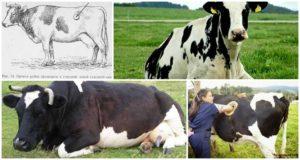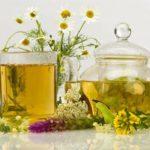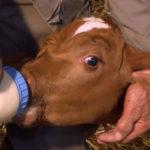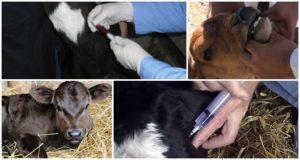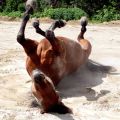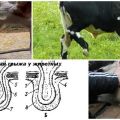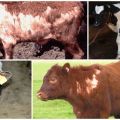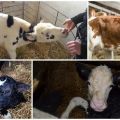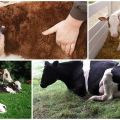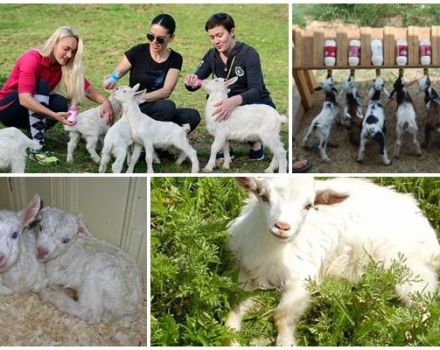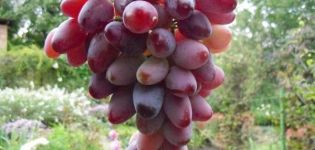Causes and symptoms of colic in a calf, what to do for treatment
Intestinal disorders such as colic in calves are common. The onset of ailment is sometimes provoked by diseases of the digestive system. Farmers can independently help animals suffering from bloating, often associated with colic. If the colic is caused by foreign bodies entering the body, surgery may be necessary.
Varieties of colic
The appearance of an ailment, in addition to gastrointestinal diseases, can provoke sudden disruptions in the body. It is possible to conditionally subdivide calf colic into several types:
- the true type cause inflammatory processes or diseases of the intestines, stomachs. As an option - flatulence, stagnation in the intestines, acute expansion of the stomach due to the rapid consumption of feed;
- false colic is provoked by diseases of the bladder, kidneys, liver. Also, infections can be the cause of the disease;
- symptomatic can be caused by surgery or the presence of parasites in the animal's body.
Most often, the disease is caused by a malfunction of the intestines or stomachs. Moreover, intestinal swelling may be accompanied by peritonitis in some cases (thromboembolism). Intestinal colic without peritonitis is caused by flatulence, compaction or stagnation of food in the small intestine.
Causes of occurrence
To prevent colic, it is important to know the causes of the disease. The most common options are:
- in the case of a sudden transition from milk feeding of calves to an "adult" diet. Sometimes colic provokes feeding the calf sour cow's milk;
- both calves and adult cows suffer from food poisoning;
- failure of the gastrointestinal tract or the occurrence of serious diseases of internal organs.
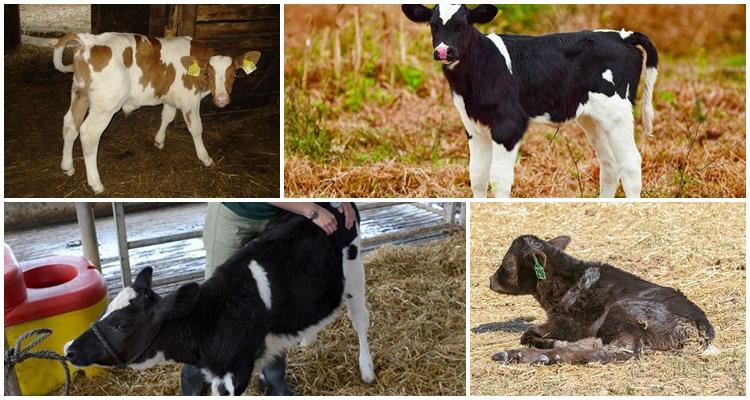
Reasons for poisoning animals:
- deviations in the mode of drinking or nutrition;
- feeding the livestock immediately after a walk with fermenting feed or poor quality compound feed (with mold, harmful impurities in the form of sand, soil);
- eating with hay or grazing poisonous plants;
- overheating or hypothermia;
- eating frozen food;
- drinking cold water;
- foreign objects entering the food - all this also causes cramps and abdominal upset.
Symptoms and Signs
In appearance, it is possible to determine that an animal suffers from colic and has something in pain by several primary signs:
- the calf is in a nervous, agitated state, constantly kicks its legs, does not stand in one place, tries to lie down;
- the cattle hits itself with its hind legs on the stomach, constantly fanning itself with its tail;
- the belly of the calf is swollen. The cattle refuses to drink and feed.
From the secondary symptoms of colic, one can single out shortness of breath, atypical work of the urinary system (absence or frequent urination), and disturbances in the work of the cardiovascular system.
Diagnosis of the disease
Veterinarians and experienced breeders note that a calf has a stomach ache due to various diseases. Therefore, for the correct diagnosis, the animal is carefully examined and felt, the temperature and pulse are measured.
But you can't limit yourself to visual inspection. It is necessary to conduct clinical studies of blood, urine, feces.
How to treat colic in cattle
It is important to relieve the painful condition of the animal before starting treatment. Initially, the cattle are given a portion of vegetable oil, a slimy decoction, to drink as a laxative. This is necessary so that the gastrointestinal tract is cleared of accumulated food.
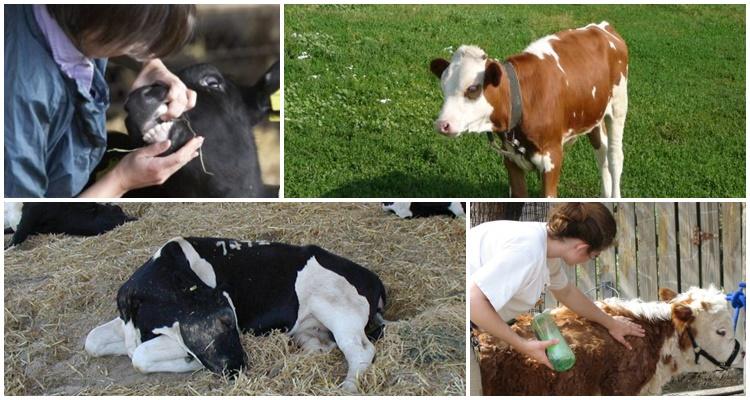
The animals are given "Spazmalgon" to relieve severe pain syndrome caused by smooth muscle spasms, reduce fever, and relax muscles. Camphor and caffeine will restore the normal functioning of the cardiovascular system.
If colic is mild, then other methods of treatment are used. An infusion or a weak decoction of chamomile will help eliminate intestinal inflammation. As a laxative, the animal is given a warm enema with soapy water. You can also massage the abdomen and rub the calf to help keep it warm.
Folk methods
To eliminate colic, first of all, decoctions and infusions of medicinal herbs are often used. This method is acceptable if colic is not a symptom of infectious diseases or the ingestion of foreign objects.
Decoctions of chamomile and St. John's wort suppress inflammatory processes. Infusion of oak bark has an antispasmodic effect, anti-inflammatory and antimicrobial. The tannins contained in the bark protect intestinal tissue from local irritation, while inhibiting inflammation and reducing pain.
When using folk remedies, it must be borne in mind that not every animal can be helped in this way (there is an intolerance to certain herbs). Again, decoctions are more related to preventive measures. Therefore, it is advisable that the veterinarian examined the sick animal and prescribed a treatment regimen, dosage of decoctions or vegetable oils.
What can threaten?
In cattle, colic is most often caused by atony of the proventriculus (the motility of the rumen, mesh and book stops). Acute atony can be triggered by a sharp change in feed or diet, poor quality compound feed, overfeeding with concentrates while starving in water.
By eliminating the causes and timely treatment, you can quickly improve the health of the cattle.
Secondary atony caused by infectious and invasive diseases (foot and mouth disease, botulism, piroplasmosis, fascioliasis) are of great danger. If you do not start treatment in a timely manner, the animals die. Given the fact that many diseases are infectious, there is a risk of infection of the livestock. Such diseases reduce the productivity of livestock farms, reduce the number of livestock and entail the costs of treating animals and carrying out quarantine and preventive measures.
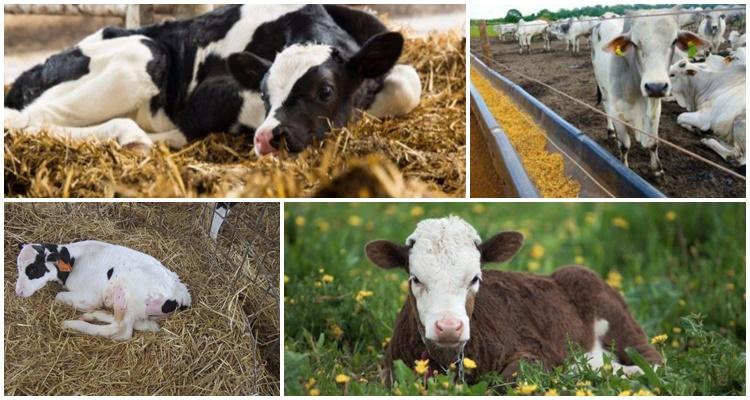
Prevention
Thanks to timely preventive measures taken, it will be possible to reduce the likelihood of diseases and significantly improve the quality of keeping animals. The main prevention of colic in calves and adults:
- providing pregnant and lactating cows with a full diet so that the calves have a strong body;
- drawing up the correct diet for calves, ensuring a smooth transition from dairy feed to standard feed;
- thorough check of food before feeding, removal of poor-quality compound feed or hay with harmful plants.
Both calves and adults should receive regular vaccinations. All animals should be kept in special rooms that are regularly cleaned and disinfected. If colic is accompanied by suspicious symptoms, you should immediately seek veterinary help. It is recommended to isolate the animal from the herd for the period of clinical studies.
The appearance of colic in calves must be responded to immediately, since such an ailment can be caused by a dangerous disease. If the colic is mild, then the way to restore the health of the cattle is to drink plenty of fluids, abstain from feeding for a day. Then boiled vegetables and hay are gradually introduced into the diet.
